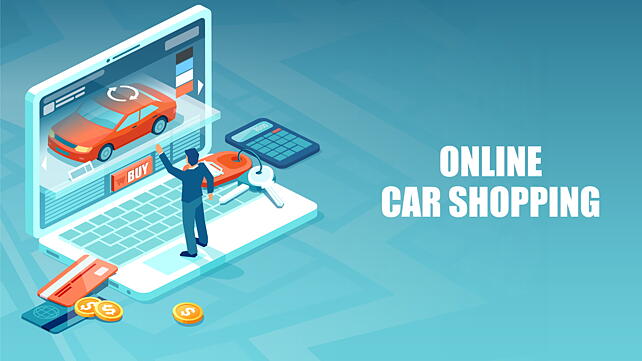
Mobility is more than going from point to point, whether it is goods or personal transportation. There are enough avenues of mobility today, and consumers have access to these depending on their affordability and preferences. Consumers are more particular about the experiences now since rest of the aspects are available in abundance.
In an endeavour to create these experiences, manufacturers are working on different soft and hard levers of their marketing strategies to create an emotional personalised connect with consumers.
As a starting point, it is an imperative to understand the habits of a consumer. OEMs and their vendor partners have already integrated consumer engagement upstream as soon as product development begins. The styling, touch and feel inside the vehicle, ergonomics, safety and many other aspects have iterative loops with consumers during the development process.
In terms of the emotional connect, it is necessary to understand the consumer to get them hooked to the product. That is possible by implementing the habit loops. Through habits consumers connect with each other and the brand. In digital environments, implementing habit loops is a priority to keep the consumers engaged.
The mobility fraternity needs a lot of catching up in this space. Habit loops, per analyst data, are neurological in nature comprising three facets: cue, routine, and reward. These can get a consumer addicted to a particular brand of vehicle and its features. It must start by creating a hook for the vehicle brand that encourages investing in a purchase.

Due to COVID, there were numerous disruptions that shifted many business aspects of the value chain to go online. This accelerated the digital transformation in the mobility fraternity as well. The new normal and balanced new ways of conducting business experiences will stay. Consumers will expect a mix of online and face to face engagements, and experiences. The digital online tools and applications will continue, to keep an edge over competition. This new normal has gradually integrated in the lives of consumers and generated confidence in products. For example, the retail experience of buying a car in person, has transitioned to an online activity.
Giving Customers Access
Over the years, some OEMs have taken the lead to show consumers the ‘inside of their business’. The plant tours offered by OEMs are an outstanding way to show consumers about how a vehicle is assembled and rolls down from an assembly line. When a consumer sees the ‘how’ of a vehicle assembly, their confidence and brand appeal quotient scales up.
Inclusion of consumers in their product launches, captive special events and vehicle previews is another lever that creates the brand attractiveness and is used by some OEMs. There are OEMs that encourage consumers to pick and choose features and give them access to the stages of assembly of their vehicle as it gets ready, post their orders. That is a huge step in confidence building of a consumer in a brand and a phenomenal consumer experience.

Through all this, the messaging must be consistent from an OEM brand, whether a consumer interacts on twitter, email, phone, website or visiting a dealer or a plant. It is an expectation rather than ‘nice to have’. OEMs have created an omni-channel consumer experience through digitalisation and a CRM system, in one central location to manage the varying expectations of consumers.
The products launched by OEMs in different market segments – mass market or premium – have articulated the quantification of their brands. Quantified differentiation is getting harder for the diversity of vehicle platforms in the marketplace. The OEMs must realise that the consumer will have a higher expectation from their brand than their competition. The crucial trend will be to stand out amongst the dozens of vehicles and features, and still be differentiated. Analysts say that about 81% brands this year expect to be competing based on consumer experience.
Better Consumer Experience
Chatbots have exploded in the industry to automate sales and marketing tasks, and that has had a positive effect on consumer experience. Artificial Intelligence, as mentioned above, has accelerated its inroads in the mobility fraternity and will be the game changer for the front runner OEMs in the mobility industry.
Response and ‘issues resolution’ time is directly proportional to consumer experience impact. AI Chatbots have been able to scale up to 70+% of their FAQs. Consumers are savvier and more resourceful, and they want OEMs to respect that as they figure out to serve them better, and give the right expanse of attention.

The other high in consumer experience is personalisation. OEMs have started leveraging that channel but need to still go far in their pursuit. Analysts show data that indicates personalisation will become the determining factor in market success, soon. Some of the common examples are the personalised experiences in vehicle delivery at a dealership. Companies are creating detailed consumer identities and using that through data lakes and digitalisation to guide the content to be shared with each of their consumers.
Manufacturers have generally used prognostics in vehicle servicing and logistics planning. In consumer experience, using predictive analytics helps even a lot more. OEMs have access to a lot of consumer data now, more than they ever had before. Consumers selectively are willing to share more data if it benefits them. By investing in the right AI tools and data analytics techniques, predictive analytics can equally benefit the consumer and the OEM. It is about the collective intelligence of the stakeholders that will bring the principal consumer experience.
The consumer experiences need a continuous enhancement as the competition grows and resourcefulness of our consumers increases. While various tools and AI techniques are being deployed, consumers also trust the OEMs with the belief that their data will be protected and used for the right purpose and to deliver relevant content to them. Data security and privacy are vital pillars in the whole consumer experience space. Data security tools, norms and regulations will need to be adhered to, as mandated, timely audits to be carried out and data secrecy to be maintained. This will help build and maintain a stronger relationship among the consumer, brand, and OEM.
In conclusion, for a sustainable consumer experience, the mobility fraternity will need to have an omni-channel service for a personalised customer journey through a balance of offline and online interactions. AI and innovative digitalisation tools will bring in the game changing effects for consumer experiences. Mobility is about the right consumer experiences, in the right brand and at the right time.
About the Author: Dr Arun Jaura is Managing Director of Michelin India Technical Center in Pune.